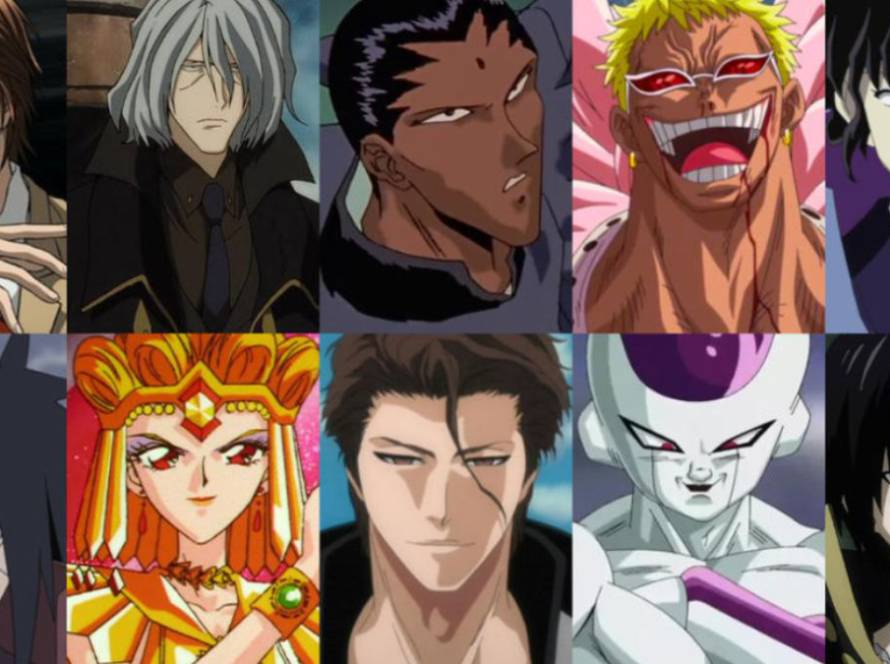Are you tired of scrolling through endless anime recommendations only to find the same popular titles over and over? 🙄 It’s time to break free from the mainstream and discover the hidden gems that the anime world has to offer! 💎✨
In this blog post, we’re diving deep into the realm of underrated anime – those brilliant series that somehow slipped under the radar but deserve a spot in your must-watch list. From mind-bending thrillers to philosophical journeys, we’ve curated a list of top 8 underrated anime that will captivate your imagination and leave you wondering why they aren’t more widely celebrated.
Get ready to embark on a journey through dystopian cyberpunk worlds, ethereal tales of nature and spirits, and surreal explorations of memory and identity. We’ll uncover the artistry behind storytelling, the depth hidden within sports anime, and the gentle contemplations of life and death. So, buckle up anime fans – it’s time to expand your horizons and discover why these top 8 underrated anime gems truly deserve more recognition!

Criteria for Selecting Underrated Anime
In the vast ocean of anime, some truly exceptional series often slip through the cracks, overshadowed by more mainstream titles. To uncover these hidden gems, we’ve established specific criteria that define what makes an anime “underrated.” Let’s explore these factors that have guided our selection process.
Hidden Gems with Low Viewership
One of the primary indicators of an underrated anime is its relatively low viewership despite its quality. These series may have flown under the radar due to limited marketing, niche subject matter, or release timing. However, their storytelling, character development, and artistic merit often rival or surpass more popular shows.
Critically Acclaimed but Overlooked Series
Some anime receive high praise from critics but fail to capture widespread audience attention. These critically acclaimed works often push the boundaries of storytelling or tackle complex themes, earning respect from industry professionals and dedicated fans. However, they may lack the mass appeal of more conventional series, leading to their underrated status.
Unique Storytelling or Art Style
Anime that break away from traditional narrative structures or visual styles often fall into the underrated category. These series may experiment with:
- Non-linear storytelling
- Distinctive animation techniques
- Unconventional character designs
- Innovative world-building
While these unique approaches can create unforgettable viewing experiences, they may also alienate viewers accustomed to more conventional anime, resulting in lower popularity.
Cult Favorites Among Niche Audiences
Some anime develop devoted followings within specific subcultures or fan communities. These cult favorites often resonate deeply with their audience due to:
- Exploration of specialized topics
- Representation of underrepresented groups
- Homages to specific genres or cultural elements
While these series may not achieve mainstream success, their impact on their dedicated fanbase is significant and lasting.
Release Details
The circumstances surrounding an anime’s release can significantly influence its popularity and recognition. Factors that may contribute to a series being underrated include:
- Limited distribution or availability
- Poor timing (e.g., released alongside more hyped titles)
- Lack of effective marketing or promotion
- Region-specific releases without widespread international distribution
By considering these criteria, we’ve curated a list of top 8 underrated anime that deserve more recognition. These series may not have achieved the same level of fame as the “Big Three” or other mainstream hits, but they offer unique, compelling experiences that any anime enthusiast should explore.
Now that we’ve established our selection criteria, let’s dive into our first underrated gem: “Ergo Proxy,” a dystopian cyberpunk masterpiece that exemplifies many of these qualities.
“Ergo Proxy”: A Dystopian Cyberpunk Masterpiece
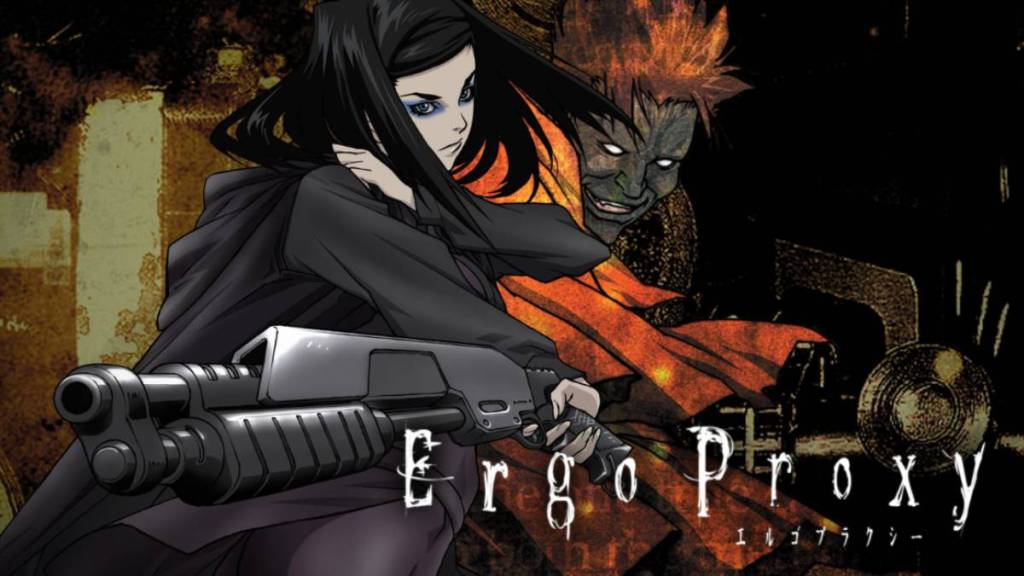
“Ergo Proxy” stands as a testament to the depth and complexity that anime can achieve, offering viewers a rich, dystopian cyberpunk experience that remains criminally underappreciated. This series masterfully blends intricate storytelling with stunning visuals, creating a world that lingers in the mind long after the final episode.
Complex narrative and philosophical themes
At its core, “Ergo Proxy” is a philosophical journey disguised as a sci-fi thriller. The series explores profound themes such as:
- The nature of consciousness and self-awareness
- The blurred lines between humanity and artificial intelligence
- The role of memory in shaping identity
- The consequences of environmental destruction
These themes are woven into a complex narrative that challenges viewers to think deeply about existential questions. The story unfolds like a puzzle, with each episode revealing new layers of meaning and encouraging multiple viewings to fully grasp its intricacies.
Stunning visual aesthetics
“Ergo Proxy” is a visual feast that pushes the boundaries of anime artistry. The series boasts:
- A dark, atmospheric color palette that perfectly captures the dystopian mood
- Intricate character designs that blend human and mechanical elements
- Breathtaking landscapes that depict a world teetering on the edge of collapse
- Fluid animation that brings intense action sequences to life
The attention to detail in every frame is remarkable, creating a consistent and immersive visual experience that complements the deep narrative.
Character development and world-building
The series excels in crafting multidimensional characters whose growth and revelations drive the story forward. Re-l Mayer, Vincent Law, and Pino form a compelling trio, each undergoing significant character arcs that intertwine with the overarching plot. As they journey through the desolate world, viewers are treated to masterful world-building that gradually unveils the intricate societal structures, technologies, and histories that shape this dystopian future.
Release Details
“Ergo Proxy” first aired in 2006, consisting of 23 episodes that form a complete and satisfying narrative arc. Despite its initial release over a decade ago, the themes and visuals of the series remain strikingly relevant and impactful in today’s world.
As we delve deeper into our list of underrated anime gems, “Ergo Proxy” sets a high bar for intellectual engagement and artistic achievement. Its blend of complex storytelling, philosophical depth, and stunning visuals make it a must-watch for anyone seeking a thought-provoking anime experience. Next, we’ll explore another hidden treasure that takes a vastly different approach to storytelling, yet is equally deserving of recognition.
“Mushi-Shi”: Ethereal Tales of Nature and Spirits
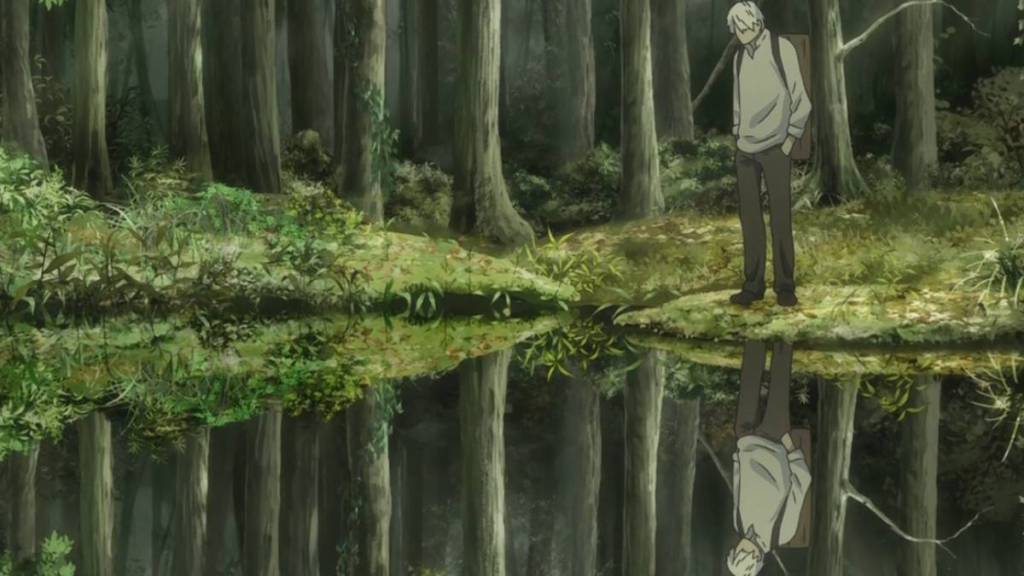
“Mushi-Shi” stands as a testament to the power of subtlety and atmospheric storytelling in anime. This series, often overlooked by mainstream audiences, offers a unique and captivating experience that sets it apart from more action-oriented shows.
Episodic storytelling with overarching themes
“Mushi-Shi” adopts an episodic format, with each episode presenting a self-contained story. However, these individual tales are woven together by recurring themes and the enigmatic presence of the main character, Ginko. The episodic nature allows viewers to:
- Explore diverse supernatural phenomena
- Witness a variety of human experiences and emotions
- Delve into different aspects of the mushi world
Despite its episodic structure, the series maintains cohesion through its consistent tone and the gradual revelation of the mushi’s nature and their impact on the world.
Serene atmosphere and beautiful artwork
One of the most striking aspects of “Mushi-Shi” is its visual and auditory presentation. The series creates a serene, almost meditative atmosphere through:
- Soft, muted color palettes that evoke a sense of tranquility
- Detailed backgrounds that bring the natural world to life
- A haunting, minimalist soundtrack that enhances the otherworldly ambiance
The artwork in “Mushi-Shi” is nothing short of breathtaking, with each frame meticulously crafted to immerse viewers in its ethereal world. The attention to detail in depicting both the natural environment and the supernatural mushi is a testament to the show’s artistic vision.
Rich folklore and supernatural elements
At the heart of “Mushi-Shi” lies its unique take on supernatural entities called mushi. These beings, existing between the realms of life and death, form the basis for the series’ exploration of folklore and the supernatural. The show’s approach to these elements is characterized by:
- A blend of traditional Japanese folklore and original mythology
- Thought-provoking examinations of the relationship between humans and nature
- Nuanced portrayals of the mushi, presenting them as neither good nor evil, but as fundamental forces of nature
This rich tapestry of supernatural elements provides a foundation for profound storytelling, often touching on themes of coexistence, balance, and the hidden wonders of the natural world.
Release Details
“Mushi-Shi” first aired in 2005, with a second season following in 2014. The series consists of:
- 26 episodes in the first season
- 20 episodes in the second season (Mushi-Shi: The Next Passage)
- Two special episodes and a movie
Despite its critical acclaim, “Mushi-Shi” remains relatively unknown to many anime fans. Its unique blend of folklore, supernatural elements, and serene storytelling offers a refreshing departure from more mainstream anime offerings. For those seeking a thought-provoking and visually stunning anime experience, “Mushi-Shi” stands as a hidden gem waiting to be discovered.
“Paranoia Agent”: Satoshi Kon’s Mind-Bending Thriller

Social commentary on modern Japanese society
“Paranoia Agent” stands as a testament to Satoshi Kon’s unparalleled ability to weave social commentary into a gripping narrative. This anime masterpiece delves deep into the psyche of modern Japanese society, exposing its underbelly with surgical precision. Through its diverse cast of characters, the series explores themes of isolation, societal pressure, and the impact of technology on human relationships.
The show’s central figure, Lil’ Slugger, serves as a metaphor for the collective anxiety and stress plaguing contemporary Japan. As this mysterious assailant strikes fear into the hearts of Tokyo’s residents, we witness how different individuals cope with societal expectations and personal demons. The series expertly portrays the façade of normalcy that many maintain while grappling with inner turmoil, reflecting the often-unspoken struggles within Japanese culture.
Psychological depth and surreal imagery
One of the most striking aspects of “Paranoia Agent” is its masterful blend of psychological depth and surreal imagery. Kon’s signature style is on full display, blurring the lines between reality and fantasy in ways that keep viewers constantly questioning what they see.
The anime’s visual language is rich with symbolism and metaphor, using dreamlike sequences and distorted perspectives to represent characters’ inner worlds. This approach not only enhances the storytelling but also creates a visceral experience that lingers long after each episode ends.
Key elements of the show’s psychological depth include:
- Complex character backstories that unveil layers of trauma and repression
- Visual representations of mental states through shifting environments and color palettes
- Exploration of mass hysteria and its effects on individual and collective psyche
- Subtle nods to Jungian psychology and the concept of the collective unconscious
Interwoven storylines and character arcs
“Paranoia Agent” excels in its narrative structure, presenting a tapestry of interconnected stories that gradually reveal a larger, more sinister picture. Each episode focuses on different characters, their lives intersecting in unexpected ways as the mystery of Lil’ Slugger unfolds.
This approach allows for:
- A multi-faceted exploration of the central themes
- Rich character development across a diverse cast
- A gradual buildup of tension and intrigue
- A satisfying convergence of plotlines in the series’ climax
As viewers follow these interwoven narratives, they’re treated to a masterclass in storytelling that rewards close attention and multiple viewings.
Release Details
“Paranoia Agent” first aired in Japan from February to May 2004, consisting of 13 episodes. Despite its relatively short run, the series left an indelible mark on the anime landscape. Its unique blend of psychological thriller and social commentary set it apart from contemporary works, cementing Satoshi Kon’s reputation as a visionary director.
Now that we’ve explored the mind-bending world of “Paranoia Agent,” let’s turn our attention to another unique anime that pushes the boundaries of storytelling and visual style.
“Kaiba”: A Surreal Journey Through Memory and Identity
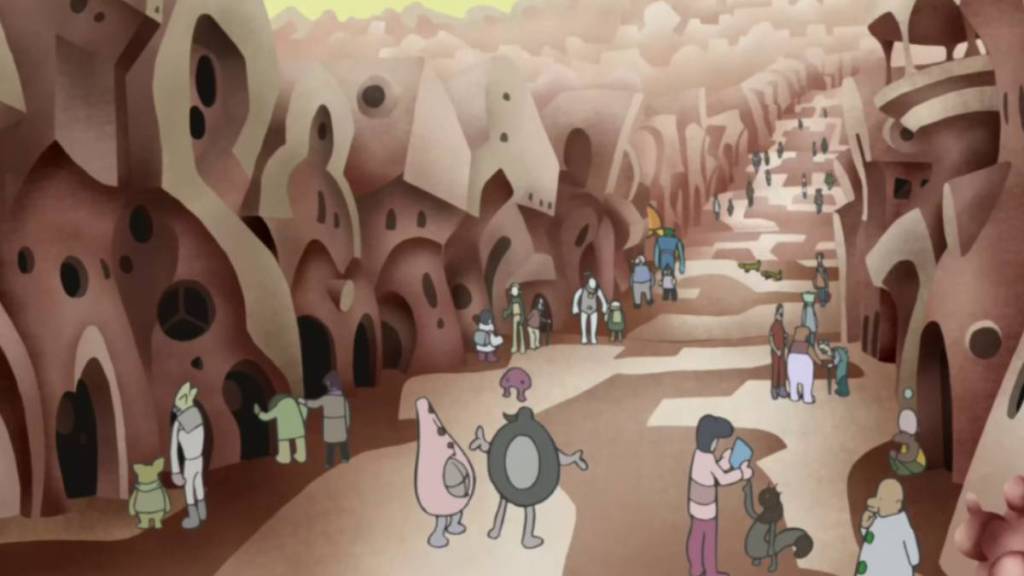
Now that we’ve explored the mind-bending thriller “Paranoia Agent,” let’s delve into another underrated anime gem that pushes the boundaries of storytelling and visual art: “Kaiba.”
Unique Animation Style
“Kaiba” immediately captivates viewers with its distinctive and unconventional animation style. Created by the visionary director Masaaki Yuasa, the series features:
- Soft, rounded character designs reminiscent of retro cartoons
- Vibrant, pastel color palettes that create a dreamlike atmosphere
- Fluid, shape-shifting animations that defy physical laws
- Surreal landscapes and bizarre creature designs
This unique visual approach perfectly complements the show’s themes and narrative, creating an immersive and unforgettable viewing experience.
Exploration of Transhumanism and Consciousness
At its core, “Kaiba” is a profound exploration of transhumanist concepts and the nature of consciousness. The series presents a world where:
- Memories can be stored, traded, and even erased
- Bodies are interchangeable and disposable
- Identity is fluid and often uncertain
Through its imaginative storytelling, “Kaiba” raises thought-provoking questions about the essence of human identity, the value of memories, and the ethical implications of advanced technology. It challenges viewers to contemplate what truly defines us as individuals in a world where the boundaries between mind, body, and machine are blurred.
Emotional Depth Beneath Whimsical Exterior
Despite its seemingly whimsical and childlike aesthetic, “Kaiba” harbors a profound emotional core. The series tackles complex themes such as:
- Love and loss
- The pain of forgetting and being forgotten
- Social inequality and power dynamics
- The search for meaning and belonging in a chaotic universe
These weighty subjects are handled with remarkable sensitivity and nuance, creating a powerful contrast with the show’s playful visual style. This juxtaposition of lighthearted appearance and deep emotional resonance makes “Kaiba” a truly unique and affecting viewing experience.
Release Details
“Kaiba” first aired in Japan in 2008, consisting of 12 episodes. Despite its limited run, the series has left a lasting impression on those fortunate enough to discover it. While it may not have achieved widespread popularity, “Kaiba” has garnered critical acclaim and a devoted cult following.
As we move forward to our next underrated anime gem, we’ll see how another series uses the power of storytelling to explore the human condition in a completely different yet equally compelling way.
“Shouwa Genroku Rakugo Shinjuu”: The Art of Storytelling

“Shouwa Genroku Rakugo Shinjuu” stands out as a true hidden gem in the anime world, offering a captivating exploration of the traditional Japanese art of rakugo. This series masterfully weaves together storytelling, character development, and historical drama to create a truly unforgettable viewing experience.
Historical Drama Set in the World of Rakugo
Set against the backdrop of post-war Japan, “Shouwa Genroku Rakugo Shinjuu” immerses viewers in the fascinating world of rakugo, a traditional form of Japanese comedic storytelling. The anime paints a vivid picture of this art form’s evolution through the Shouwa era, showcasing its struggles to remain relevant in a rapidly modernizing society. This historical context adds depth and authenticity to the narrative, making it a unique entry in the anime landscape.
Character-Driven Narrative Spanning Generations
One of the most compelling aspects of “Shouwa Genroku Rakugo Shinjuu” is its intricate, character-driven storyline that spans multiple generations. The series follows the lives of several rakugo performers, primarily focusing on:
- Yakumo Yurakutei VIII: A stern, traditional master of rakugo
- Sukeroku Yurakutei II: A talented but rebellious performer
- Yotaro: A former yakuza member turned rakugo apprentice
Through these characters and their interconnected stories, the anime explores themes of:
- Tradition vs. innovation
- The pursuit of artistic excellence
- Interpersonal relationships and their impact on art
- The struggle to preserve cultural heritage
Authentic Portrayal of Japanese Traditional Arts
“Shouwa Genroku Rakugo Shinjuu” excels in its authentic representation of rakugo and other traditional Japanese arts. The anime goes to great lengths to showcase:
- Detailed performances of various rakugo stories
- The rigorous training process for rakugo apprentices
- The intricacies of kimono wearing and other cultural practices
- The hierarchical structure within the rakugo world
This attention to detail not only educates viewers about Japanese culture but also adds a layer of richness to the storytelling that sets it apart from other anime series.
Release Details
“Shouwa Genroku Rakugo Shinjuu” was originally released in 2016, with a second season following in 2017. Despite its relatively recent release, the series has remained somewhat underappreciated in the broader anime community. However, those who have discovered this gem often praise its mature themes, exceptional character development, and unique subject matter.
As we delve deeper into our list of underrated anime, we’ll next explore another series that offers a distinct and thought-provoking viewing experience. “Kino’s Journey” takes us on a philosophical adventure through strange lands, presenting yet another example of anime’s potential for profound storytelling.
“Ping Pong the Animation”: More Than Just Sports

Distinctive art style and fluid animation
“Ping Pong the Animation” stands out immediately with its unique and unconventional art style. Unlike the polished, clean lines often associated with anime, this series embraces a rough, sketchy aesthetic that perfectly complements its raw and emotional storytelling. The animation, while seemingly simplistic, is remarkably fluid and dynamic, especially during the intense ping pong matches.
The visual approach serves a deeper purpose:
- It reflects the inner turmoil and growth of the characters
- Enhances the impact of key moments with exaggerated perspectives
- Creates a sense of energy and movement that brings the sport to life
Deep character studies and personal growth
At its core, “Ping Pong the Animation” is a profound exploration of its characters’ psyches. The series delves deep into the lives of its protagonists, offering:
- Nuanced portrayals of ambition and self-doubt
- Realistic depictions of the struggles faced by young athletes
- Insightful examinations of the impact of expectations and pressure
Each character undergoes significant personal growth throughout the series, transcending typical sports anime tropes. We witness their triumphs and failures, not just in terms of their athletic performance, but in their journey towards self-discovery and acceptance.
Themes of talent, hard work, and friendship
The anime masterfully weaves together complex themes that resonate far beyond the world of ping pong:
- Talent vs. Hard Work: The series explores the age-old debate of natural ability versus dedicated practice, showing how different characters navigate this balance.
- The nature of competition: It delves into what drives individuals to compete and the various forms that competitive spirit can take.
- Friendship and rivalry: The relationships between the characters are multifaceted, showcasing how competition can both strain and strengthen bonds.
These themes are expertly interwoven with the sport of ping pong, using the game as a metaphor for life’s challenges and personal growth.
Release Details
“Ping Pong the Animation” first aired in Japan from April to June 2014. Directed by Masaaki Yuasa, known for his distinctive style and unconventional storytelling, the series is based on the manga by Taiyō Matsumoto. Despite its short run of just 11 episodes, the anime manages to pack in a wealth of character development and thematic depth.
The series’ unique approach to sports anime, combined with its artistic flair and profound storytelling, makes it a standout in the genre. It challenges viewers’ expectations, offering a rich, introspective experience that goes far beyond the confines of its sports setting. As we move on to our next underrated gem, we’ll see how another anime uses its premise to explore equally deep and universal themes.
“Haibane Renmei”: A Gentle Exploration of Life and Death
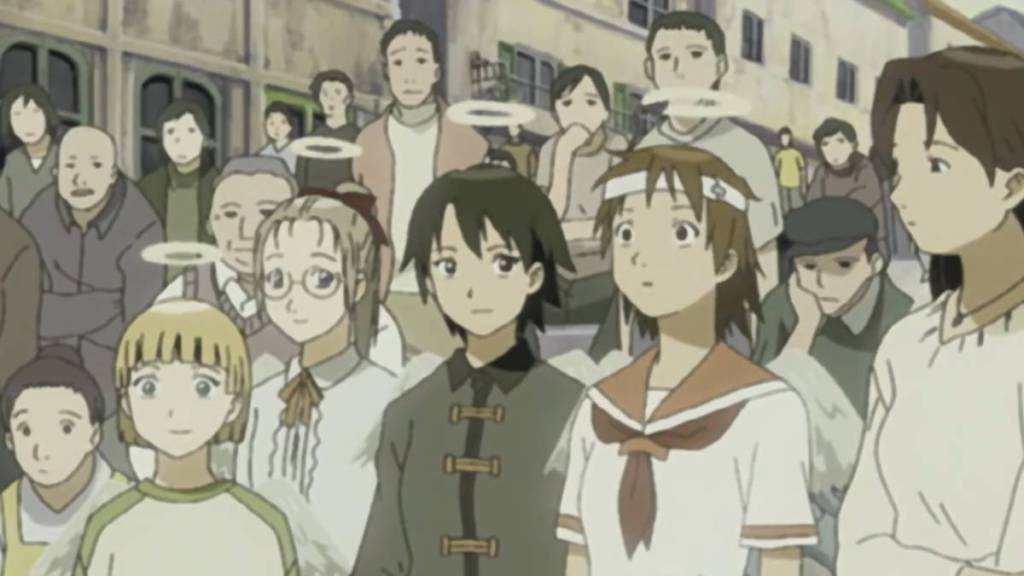
Story Plot
In a quiet, enclosed town surrounded by walls, mysterious beings called Haibane are born with halos and small gray wings. They emerge from cocoons without memory of their past lives, carrying only vague impressions of their origins. The story follows Rakka, a newly “born” Haibane, as she adjusts to life in this serene yet enigmatic world. Alongside other Haibane, she works in the town and abides by strict rules, such as never crossing the walls. As Rakka unravels her existence, she faces themes of sin, redemption, and self-acceptance while forming a poignant bond with Reki, an older Haibane with a troubled past.
Release Details
- Release Date: October 9, 2002
- Episodes: 13
- Studio: Radix
- Director: Yoshitoshi ABe (Serial Experiments Lain)
Cast & Characters
- Rakka: A kind and introspective new Haibane, struggling to reconcile her unknown past and fit into her new life.
- Reki: A nurturing but enigmatic older Haibane who hides her pain behind a protective demeanor.
- Kuu, Kana, Nemu, and Hikari: Other Haibane who each bring unique dynamics to the group, offering companionship and guidance.
- The Communicator: A masked figure who serves as a bridge between the Haibane and the outside world, enforcing the town’s rules.
Character Analysis
- Rakka: Her journey symbolizes self-discovery and the search for inner peace. As she faces the emotional weight of guilt and the fear of rejection, her growth is both relatable and deeply moving.
- Reki: The heart of the story’s emotional core, Reki’s struggle with her past and fear of abandonment is a haunting depiction of the burden of unresolved trauma. Her redemption arc is a poignant exploration of forgiveness and self-love.
- Supporting Characters: Each Haibane contributes to the themes of interconnectedness and support, acting as mirrors to Rakka and Reki’s struggles, while also facing their own quiet trials.
Main Genres
- Fantasy: The ethereal setting and the Haibane’s origins are steeped in otherworldly mystery.
- Drama: The series focuses on the characters’ emotional journeys, highlighting human struggles like guilt, hope, and healing.
- Slice of Life: Despite its heavy themes, much of the show revolves around the Haibane’s day-to-day lives, creating a calming yet contemplative tone.
Why Watch?
“Haibane Renmei” is a masterclass in subtle storytelling. Its layered symbolism, atmospheric world-building, and deeply human themes make it a poignant exploration of life, death, and the paths to self-redemption.
“Kino’s Journey: Philosophical Adventures in Strange Lands”

Story Plot
Kino’s Journey follows Kino, a calm and introspective traveler, and her talking motorcycle, Hermes, as they explore a series of mysterious, isolated countries. Each episode focuses on a new land with its own unique culture, customs, and philosophical dilemmas. Kino stays no longer than three days in any location, believing it’s enough time to learn about the place without becoming attached. The series presents thought-provoking questions about human nature, morality, and societal constructs, leaving viewers to draw their own conclusions.
Release Details
- Original Series Release Date: April 8, 2003
- Studio: A.C.G.T
- Director: Ryutaro Nakamura (Serial Experiments Lain)
- Episode Count: 13 (2003 series)
- Reboot Release Date: October 6, 2017
- Reboot Studio: Lerche
Cast & Characters
- Kino: The protagonist, a skilled gunfighter with a stoic demeanor. Kino is curious and open-minded, preferring to observe and reflect rather than judge.
- Hermes: A talking motorcycle that serves as Kino’s companion, often providing commentary and light humor.
- Various Villagers and Travelers: Each episode introduces new characters whose lives and actions reflect the values and contradictions of their societies.
Character Analysis
- Kino: Kino’s androgynous appearance and neutral attitude underscore the series’ philosophical tone. She embodies the role of an observer, refraining from interference in the conflicts she encounters. Her restraint highlights themes of agency and the consequences of action versus inaction.
- Hermes: Hermes serves as Kino’s confidant and foil, often bringing a pragmatic or slightly sarcastic perspective to their travels. His comments balance Kino’s reflective nature, adding levity to the series.
- Supporting Characters: The inhabitants of each land offer a wide spectrum of human traits, from kindness to cruelty. They often reflect broader societal themes, making them integral to the show’s narrative depth.
Main Genres
- Adventure: Kino’s travels take her to fantastical lands, each filled with unique landscapes and customs.
- Philosophical: The series uses its episodic format to explore deep ethical and existential questions.
- Drama: Emotional storytelling highlights the human condition, with episodes often ending on poignant or bittersweet notes.
- Fantasy: While grounded in human themes, the settings and talking motorcycle add a fantastical charm.
Why Watch?
Kino’s Journey is a poetic and contemplative series that challenges viewers to think beyond black-and-white morality. Its minimalist storytelling, philosophical depth, and haunting beauty make it a timeless masterpiece for those who enjoy introspective narratives.
These titles push boundaries, offering fresh perspectives on storytelling, character development, and world-building. From heartfelt slice-of-life moments to thought-provoking moral dilemmas, they cater to a variety of tastes while challenging conventional narratives.
If you’re looking for anime that lingers in your mind long after the credits roll, these gems deserve your attention. Take a chance on these underappreciated masterpieces—you might just find your next favorite series!


